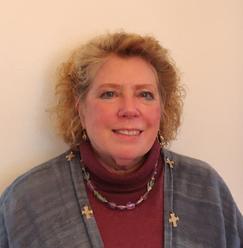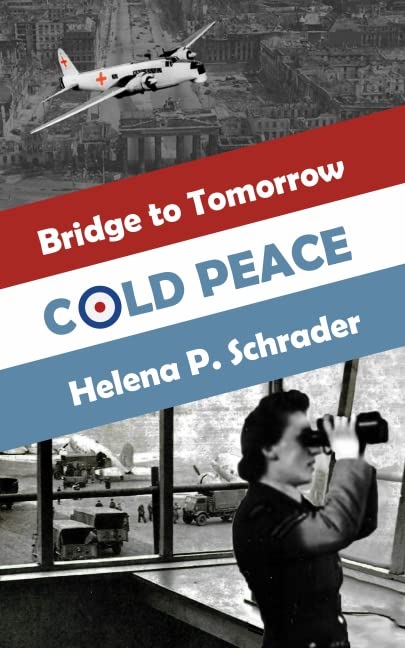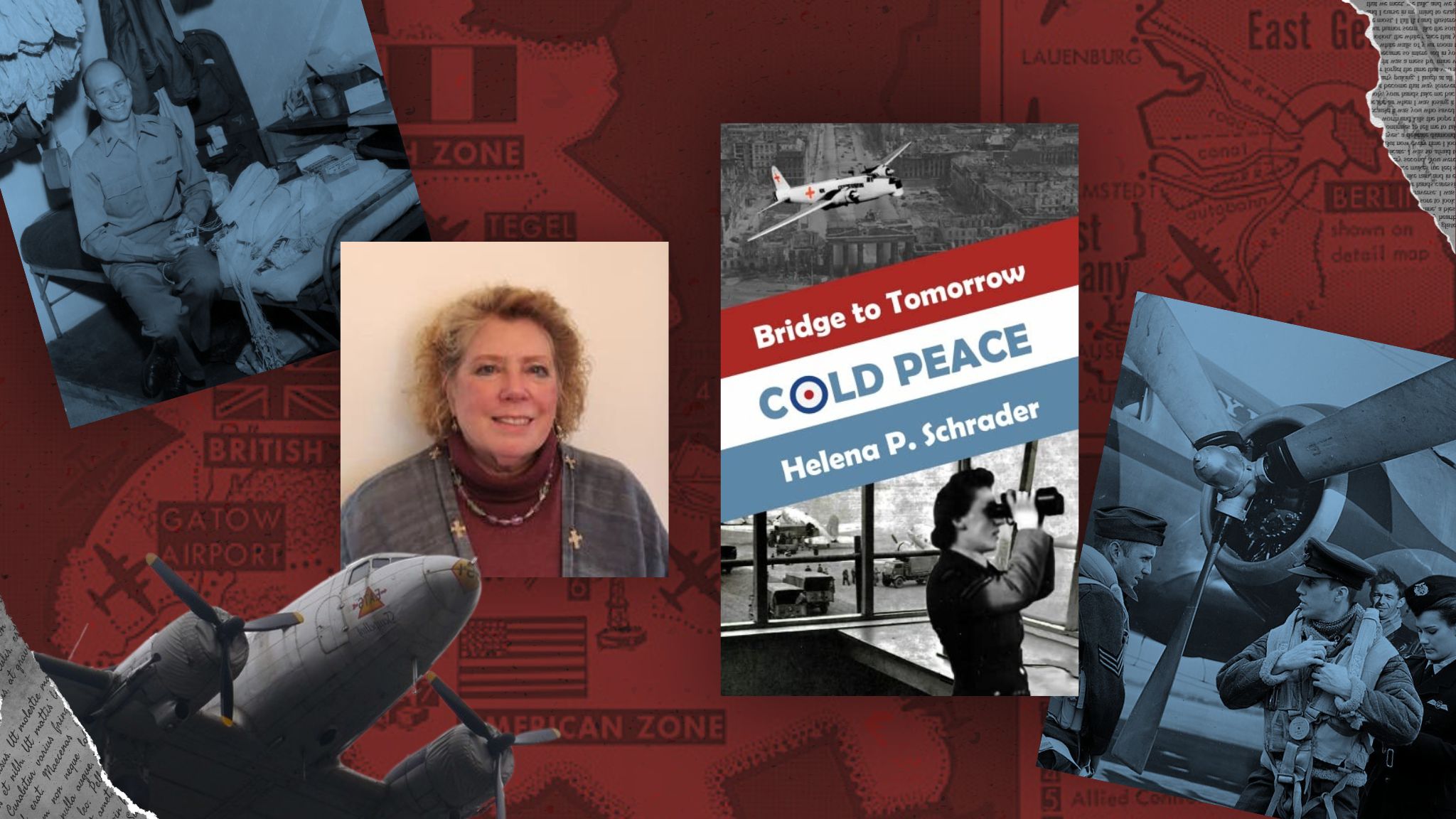Cold Peace: A Novel of the Berlin Airlift, Part I by Helena P. Schrader
Berlin, 1948. A war-ravaged city lies in ruins as the victorious Allied powers guard their separate occupation zones and work toward reinstituting Berlin’s infrastructure and economy. But when the Soviet Union brazenly imposes a blockade upon the Western sectors, it will precipitate the heroic and herculean effort known as the Berlin Airlift — the focus of historian and award-winning author Helena P. Schrader’s ambitious new trilogy, Bridge to Tomorrow.
With the first installment, Cold Peace, Schrader focuses on events in Berlin from the winter of 1947 through June 1948 as experienced through a diverse cross-section of both victor and vanquished. Here in this interview, she walks us through the process of bringing the first third of Bridge to Tomorrow to fruition, and how her previous experience as a diplomat serves as a major influence to the series.
Q: What inspired you to write this book?
A: I moved to Berlin while writing a PhD dissertation on the German Resistance to Hitler and stayed after the Berlin Wall came down because it was such an exciting place to be. I met my future husband, who was from the East, shortly after German Reunification, and we spent the first 13 years of our married life in Berlin. At the time, reminders of the Berlin Blockade were everywhere, and many people remembered the Airlift first hand. For the 60th anniversary, the British publisher Pen & Sword commissioned me to write a non-fiction account of the Airlift, and while researching for that book, I realized that material for a hundred novels lay buried in this historical episode.
Q: What was the research process like for this book?
A: Because the Berlin Airlift is a comparatively recent historical event whose importance was evident at the time it occurred, there is no dearth of primary and secondary sources. Since I am fluent in both English and German, I had ready access to government documents, military records, media reports, memoirs, diaries and letters from sources originating from three of the four main protagonists (the USA, Britain and Germany). What made the research really fun, however, was that many participants in the Airlift were still very much alive. I corresponded with the famous “Candy Bomber” Gail Halvorsen directly, I conducted interviews and I attended reunions of Airlift veterans. Altogether, I met a diverse cast of unique characters, all happy to share their stories and insights with me.
Q: What led you to choose the Cold War as the setting of your novel?
A: I didn’t choose the Cold War, I was simply attracted by a pivotal event that happened to occur during that era. The Berlin Airlift stopped Russian aggression without war and contains lessons relevant today. Cold Peace is the first book in a three-part series entitled Bridge to Tomorrow, which goes beyond the political chess game and logistical achievements depicted in countless non-fiction accounts to examine the social and psychological impacts of this dramatic confrontation. While Cold Peace focuses on the factors that caused the crisis, the second book Cold War depicts the logistical and political challenges of this unprecedented undertaking and the final book, Cold Victory, explores the price of victory.
Q:Has your background as a diplomat influenced the writing of your book?
A: Certainly. I came to the project with an in-depth and comprehensive understanding of the historical context and the issues at stake in the Berlin Crisis 1948-1949. However, diplomacy is first and foremost the art of listening and learning to understand other people’s perspectives. Skills honed in such diverse environments as Nigeria, Norway and Ethiopia enabled me to see Berlin 1948/1949 from more than one point of view. Thus, for example, I show a German-Jew confronting the ghosts of his slaughtered family, a victim of Russian sexual abuse struggling to regain her self-esteem, a disabled veteran seeking work and a widowed air traffic controller balancing work and single-parenting — not just the game of presidents and premiers or the actions of airmen and spies.
Q: Who are some of your favorite historical scholars/authors, and did you draw inspiration from any of them?
A: I’m a fan of Sharon Kay Penman, Rebecca Gablé, Leo Tolstoy and Herman Wouk — to name just a few, but I was completely baffled and frustrated by the lack of novels about the Berlin Airlift, which was, after all, a thrilling and decisive event with a happy ending! The best single book on the Airlift is probably Gail Halvorsen’s memoir, The Berlin Candy Bomber, but that — while charming — is very personal. The concept for Bridge to Tomorrow, in contrast, is broad and evolved over decades. It picks up and weaves together the lives of several characters introduced in three of my earlier novels set in WWII. In short, it is very much my own creation.
Q: What do you hope readers take away from your book?
A: I’d like my readers to come away with a greater emotional understanding of the nature and methods of tyrants. Berlin in 1948 was a city in which one tyranny had barely been defeated yet already another was gaining strength. Despite the suspicions and wounds left by the Nazis, the growing “Red” Threat was forcing the victorious Western Allies and the vanquished German population to reassess and redress their relationship. By taking the reader into the hearts and minds of characters who — whether British or American, German or Ukrainian — have all been psychologically scarred by the war yet are struggling to create a brighter future, I hope my readers will feel inspired by the power of the individual to triumph over prejudice and find common ground with former enemies.
 Dr. Helena P. Schrader is the author of six critically acclaimed non-fiction history books and nineteen historical novels, eleven of which have earned one or more literary awards. She holds a PhD in history from the University of Hamburg, which she earned with a ground-breaking biography of a leader of the German Resistance to Hitler and served as an American diplomat in Europe and Africa.
Dr. Helena P. Schrader is the author of six critically acclaimed non-fiction history books and nineteen historical novels, eleven of which have earned one or more literary awards. She holds a PhD in history from the University of Hamburg, which she earned with a ground-breaking biography of a leader of the German Resistance to Hitler and served as an American diplomat in Europe and Africa.
Helena’s chief areas of expertise are Aviation, the Second World War, Ancient Sparta and the Crusader States.





